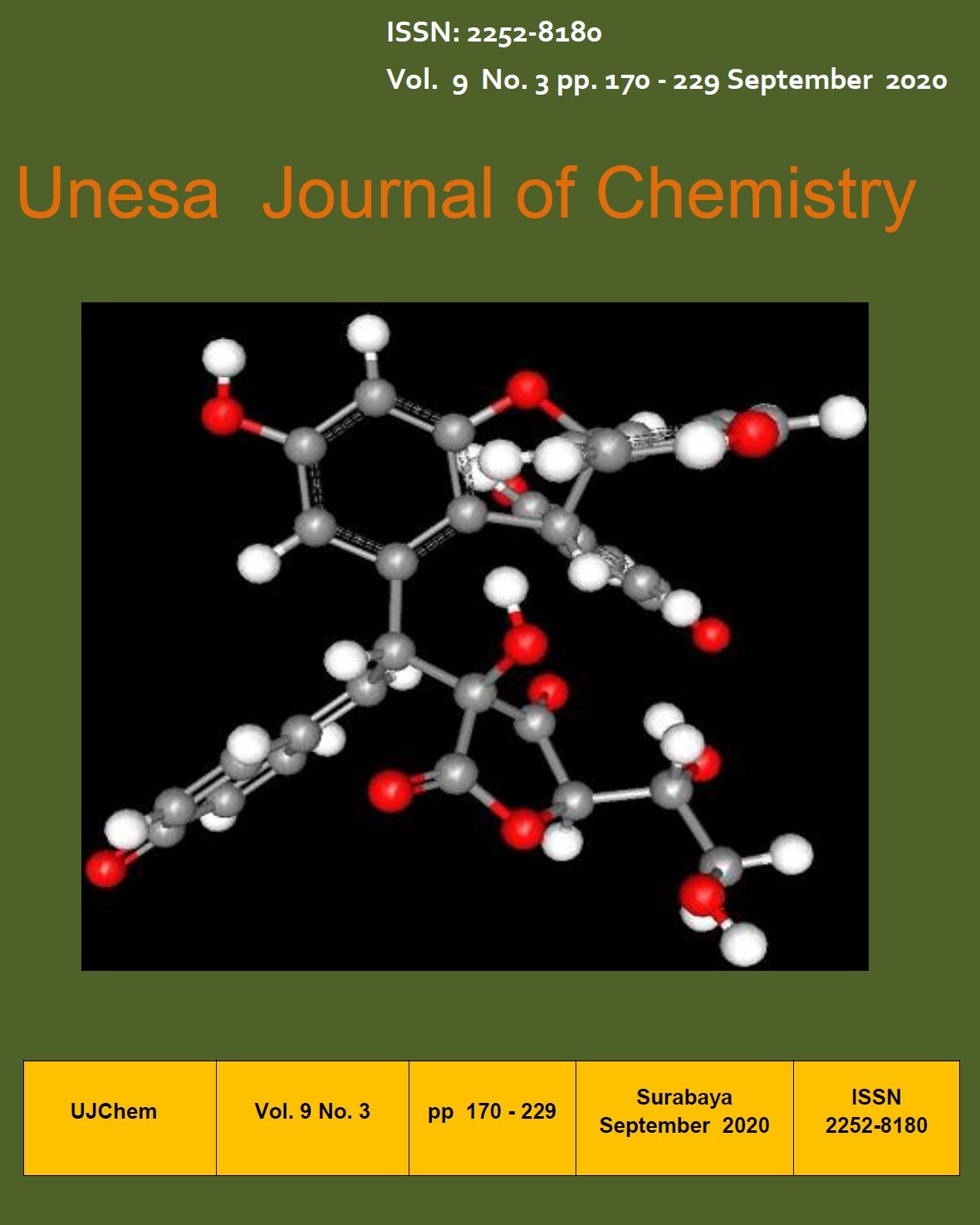PENGARUH VARIASI KONSENTRASI AMILASE DARI KEDELAI (Glycine max L.) DAN NATRIUM ALGINAT SEBAGAI MATRIKS ENZIM TERHADAP EFEKTIVITAS IMOBILISASI THE EFFECT OF AMYLASE CONCENTRATION VARIATION FROM SOYBEAN (Glycine max L.) AND SODIUM ALGINATE AS ENZYME MATRIX
Main Article Content
Abstract
Produksi enzim dalam bentuk murni memerlukan biaya yang cukup tinggi, sehingga diperlukan alternatif dengan memanfaatkan sumber daya alam. Kecambah kacang kedelai adalah salah satu yang berpotensi sebagai sumber enzim amilase. Analisis saat ini yang melibatkan enzim amilase bebas memiliki kelemahan diantaranya hanya dapat digunakan sekali pakai, secara teknis sangat sulit untuk memisahkan enzim dan produk, sulit mendapatkan kembali enzim yang masih aktif di akhir reaksi. Solusi untuk mengatasi kelemahan penggunaan enzim ialah dengan menggunakan teknologi imobilisasi enzim. Penelitian ini bertujuan untuk mengetahui pengaruh variasi konsentrasi amilase dari kacang kedelai (Glycine max L.) dan natrium alginat sebagai kisi matriks penyalut enzim terhadap efektivitas imobilisasi. Hasil penelitian menunjukkan bahwa konsentrasi amilase dan Na-alginat mempengaruhi efektivitas imobilisasi. Diperoleh kondisi optimum imobilisasi amilase pada konsentrasi amilase 10% dan konsentrasi Na-alginat 5% dengan jumlah enzim terimobilisasi sebanyak 2,2453 mg/mL dan nilai persentase efektivitas sebesar 98,1653%. Aktivitas sisa penggunaan berulang amilase imobil hingga 6 kali dengan aktivitas sisa sebesar 50,7788%.
Kata kunci : kedelai, amilase, imobilisasi, Na-alginat
The production of enzymes in pure form requires a high enough cost so that alternatives are needed by utilizing natural resources. Soybean sprouts are a potential source of amylase enzymes. The current analysis involving free amylase enzymes has a disadvantage including that it can only be used once, technically it is very difficult to separate enzymes and products, it is difficult to recover enzymes that are still active at the end of the reaction. The solution to overcome the disadvantages of using enzymes is to use enzyme immobilization technology. This study aims to determine the effect of variations in the amylase concentration of soybeans (Glycine max L.) and sodium alginate as an enzyme coating matrix on the effectiveness of immobilization. The results showed that the concentration of amylase and Na-alginate influenced the effectiveness of immobilization. The optimum conditions for amylase immobilization were obtained at 10% amylase concentration and 5% Na-alginate concentration with the amount of immobilized enzyme as much as 2.2453 mg / mL and the percentage of effectiveness was 98.1653%. Residual activity of repeated use of immobilized amylase up to 6 times with residual activity of 50.7788%.
Key words: soybeans, amylase, immobilization, Na-alginate

